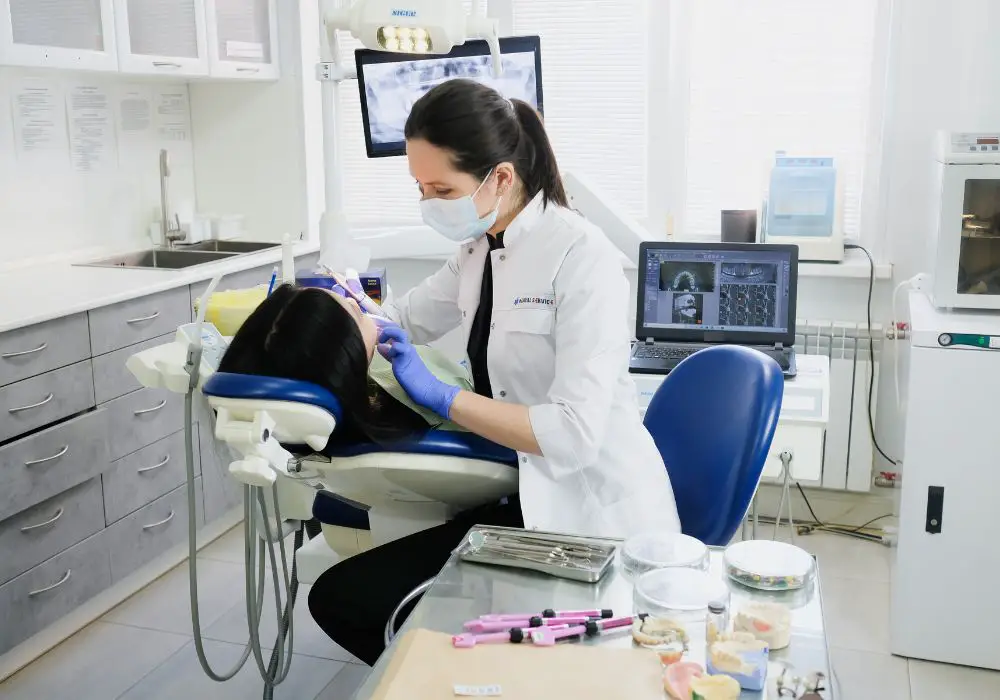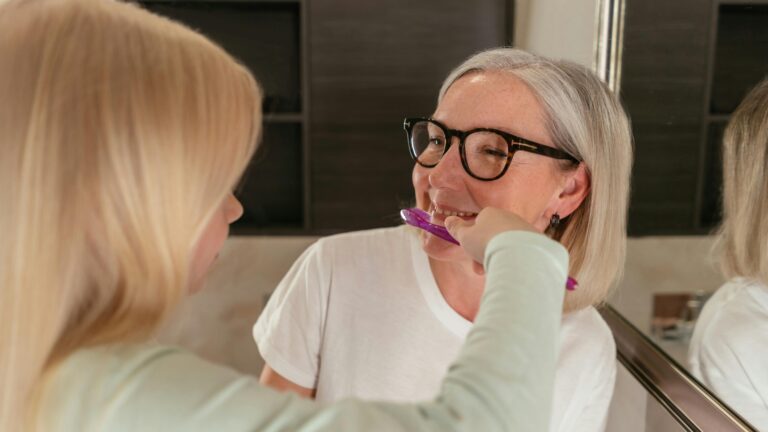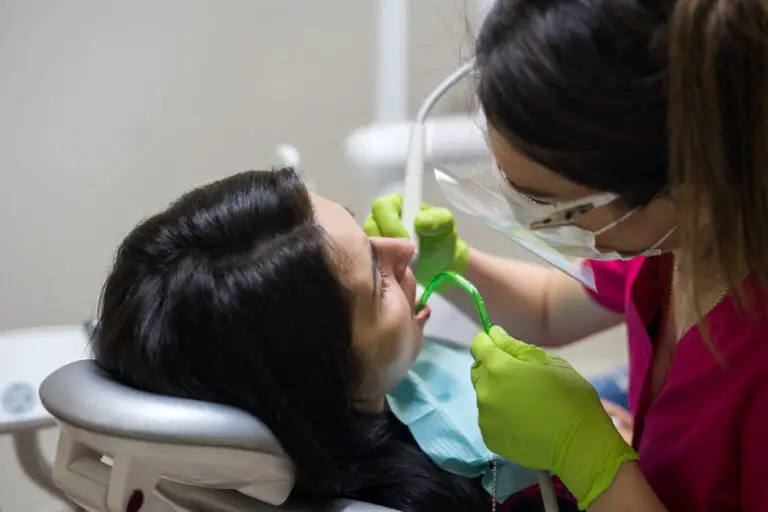Canine teeth, also known as cuspids, are the pointy teeth located on each side of your incisors (front teeth). Adults typically have four canine teeth – two on the top and two on the bottom. These teeth are used for grasping and tearing food. They also play an important role in giving structure and support to your smile.
Some people have naturally longer or more pointed canine teeth that protrude beyond the other teeth. This trait is sometimes referred to as “vampire” or “Dracula” teeth. While usually harmless, protruding canines can make some people self-conscious about their smile. Fortunately, there are options available to reshape canine teeth if desired.
Why Would I Want to Reshape My Canine Teeth?
Here are some common reasons people consider reshaping their canine teeth:
- Appearance – To reduce the protrusion or “fang” look of longer canine teeth for cosmetic reasons. This can help balance out your smile.
- Injury prevention – Sharply pointed canines, especially on the top, may injure your tongue, cheeks or gums. Filing them can reduce this risk.
- Aid dental work – Reshaping canine teeth may be needed to prepare them for crowns, veneers or braces.
- Reduce wear on lower teeth – Occlusion problems from overlapping top and bottom canines can be corrected by reshaping.
- Speech problems – In some cases, protruding canines may affect speech and result in a lisp.
- Personal preference – Some people simply don’t like the look of their prominent canine teeth.
If you’re considering reshaping for cosmetic reasons, it’s best to consult an orthodontist or cosmetic dentist. They can determine if your teeth are good candidates and achieve a natural looking result.
Options for Reshaping Canine Teeth
1. Dental Contouring
Dental contouring, also known as enameloplasty, is a quick and minimally invasive procedure to reshape teeth. It is commonly used on canine teeth that appear too long, uneven or pointed.
The process involves removing small amounts of enamel using a specialized dental drill. The tooth’s shape is then carefully smoothed and polished to create a rounder, more even appearance.
Dental contouring offers these benefits:
- Conservative removal of tooth structure
- No anesthesia required
- Quick procedure, often completed in one visit
- Immediate results – reshaped teeth are visible right away
- Generally inexpensive compared to other options
The amount of enamel removed is small – usually less than 1 millimeter. This preserves as much natural tooth as possible while still achieving the desired look.
2. Dental Bonding
Dental bonding uses tooth-colored composite resin material to reshape teeth. The resin is applied directly onto the tooth surface and sculpted into the desired shape before hardening with a curing light.
Like contouring, this is a conservative approach since it doesn’t require removing significant tooth structure. However, bonding builds up the tooth slightly which can be an advantage in some cases.
Benefits of dental bonding for canine teeth:
- Good option when little enamel is available to contour
- Reshapes teeth by adding material rather than removing it
- Can completely change tooth shape and mask flaws
- Matches color of your natural teeth
- Generally less expensive than veneers or crowns
- procedure completed in one dental visit
Bonding material doesn’t last forever though. It may need occasional repair or replacement over time.
3. Veneers and Crowns
Veneers and crowns are two indirect methods of changing tooth shape that involve custom fabrication in a dental lab.
Veneers are thin shells made of porcelain or resin composite that adhere to the front surface of teeth. They can dramatically improve the look of misshapen or heavily stained teeth.
Dental crowns cap the entire visible portion of a tooth. They provide the most complete tooth reconstruction option for major reshaping.
Benefits of veneers and crowns for canine teeth:
- Most dramatic change in tooth shape
- Completely masks imperfections
- Very durable and stain resistant
- Porcelain types mimic light reflection of natural enamel
Downsides include much higher cost and more tooth reduction compared to direct methods. These treatments also take multiple dental visits.
4. Orthodontics
Braces or clear aligners can move protruding canine teeth back into proper position over months of orthodontic treatment. This approach has the advantage of aligning your full bite rather than just reshaping individual teeth.
While effective, orthodontics requires more time, expense and oral care diligence than the other options described. Some people also don’t like the look of braces. Make sure to discuss this route with your orthodontist if you’re interested.
Procedure for Reshaping Canine Teeth

The basic process for reshaping canine teeth is as follows:
- Exam and consultation – The dentist will examine your teeth,take x-rays if needed and discuss your desired results. Options for achieving this will be presented.
- Preparation – The tooth area will be numbed with local anesthesia if contouring or bonding is planned. Your dentist will likely use a pencil-like marker to outline the enamel to be removed for contouring. A mold of your teeth may be taken for veneers or crowns.
- Reshaping procedure – The dentist will use a small dental drill with a smooth wheel or diamond tip to gently contour your teeth. For bonding, resin material will be applied incrementally and hardened with curing light until the shape is sculpted.
- Finishing – Your teeth are smoothed, polished and cleaned to reveal their new shape. Your bite will be checked and adjusted as needed.
- Follow up – Your dentist will likely schedule a follow up soon after to ensure you’re happy with the results. You may need time to adapt to the feel of your newly contoured teeth.
The entire appointment can take anywhere from 30 minutes to a couple of hours depending on how much reshaping is involved. With indirect methods like veneers and crowns, you’ll return at a later date for installation once the restorations are fabricated.
What to Expect After Reshaping Canine Teeth
Within the first day or two following reshaping, your teeth may feel slightly sensitive. This should subside quickly, but avoid extremely hot or cold foods during initial healing. Over-the-counter pain medication can be taken if you experience discomfort. Your dentist may also recommend using desensitizing toothpaste temporarily.
It’s common for the edges of your teeth to feel a little rough at first. This will smooth out over time with regular brushing and chewing as your teeth naturally polish themselves.
Other than that, you can generally resume normal oral care and eating. It may take a little while to get used to the look and feel of your newly contoured teeth. Any speech difficulties should also improve rapidly.
Results are meant to be permanent in the case of contouring and crowns. Veneers and bonding material may need occasional repair or replacement down the road. See your dentist as recommended to ensure your bite remains properly aligned. Be sure to wear a mouthguard if playing contact sports to prevent damaging your reshaped teeth.
Cost of Reshaping Canine Teeth

The cost to reshape canine teeth depends on the exact procedure chosen and how many teeth need modification. Here are some typical estimated fees per tooth:
- Dental contouring – $250-$600
- Dental bonding – $400-$1000
- Porcelain veneers – $925-$2500
- Ceramic crowns – $800-$3000
- Clear orthodontic aligners – $3500-$8000 for full treatment
Other factors affecting the overall price are your location, orthodontist/dentist fees and how much prep work is involved.
Contouring and bonding just a couple teeth for minor reshaping tends to be relatively affordable. More complex cases with multiple veneers or crowns cost several thousand dollars.
While reshaping canine teeth is usually considered a cosmetic procedure, dental insurance may cover part of the cost if done to improve dental function. Getting an estimate beforehand is recommended so you know what to expect.
FAQs About Reshaping Canine Teeth
How long does it take to recover from canine teeth reshaping?
Most patients recover from minor dental contouring or bonding in just 1-2 days. There may be some mild sensitivity at first. Healing time is a little longer after more invasive veneers or crowns – up to 1-2 weeks.
Do canine teeth move back after reshaping?
In most cases, reshaped canine teeth are permanent if proper dental techniques are used. However, veneers, bonding or crowns may need occasional repair or replacement years later.
Can I get just one canine tooth contoured?
Yes, it’s possible to reshape a single protruding canine tooth. But your dentist may recommend doing the same one on the opposite side to achieve a more symmetrical appearance.
Will grinding down canine teeth damage them?
Conservative reshaping removes very little enamel, so it doesn’t typically harm teeth. However, excessive grinding can expose dentin and make teeth more prone to sensitivity.
Can I still bite into food after reshaping canines?
Your dentist will ensure reshaped canine teeth are still capable of biting and tearing. However, you may need to cut harder foods into smaller pieces for the first few weeks post-procedure.
Conclusion
In summary, there are several effective options for reshaping overly pointy or protruding canine teeth. The least invasive methods are dental contouring and bonding, which conservatively reshape teeth by removing or adding small amounts of material.
For more dramatic changes in tooth shape, veneers and crowns are available but involve removing more natural tooth structure. Clear orthodontic aligners can also successfully reposition canines.
Consult an orthodontist or cosmetic dentist to determine the best procedure based on your goals, budget and amount of tooth modification necessary. With the right approach, you can improve the look and function of prominent canine teeth.






